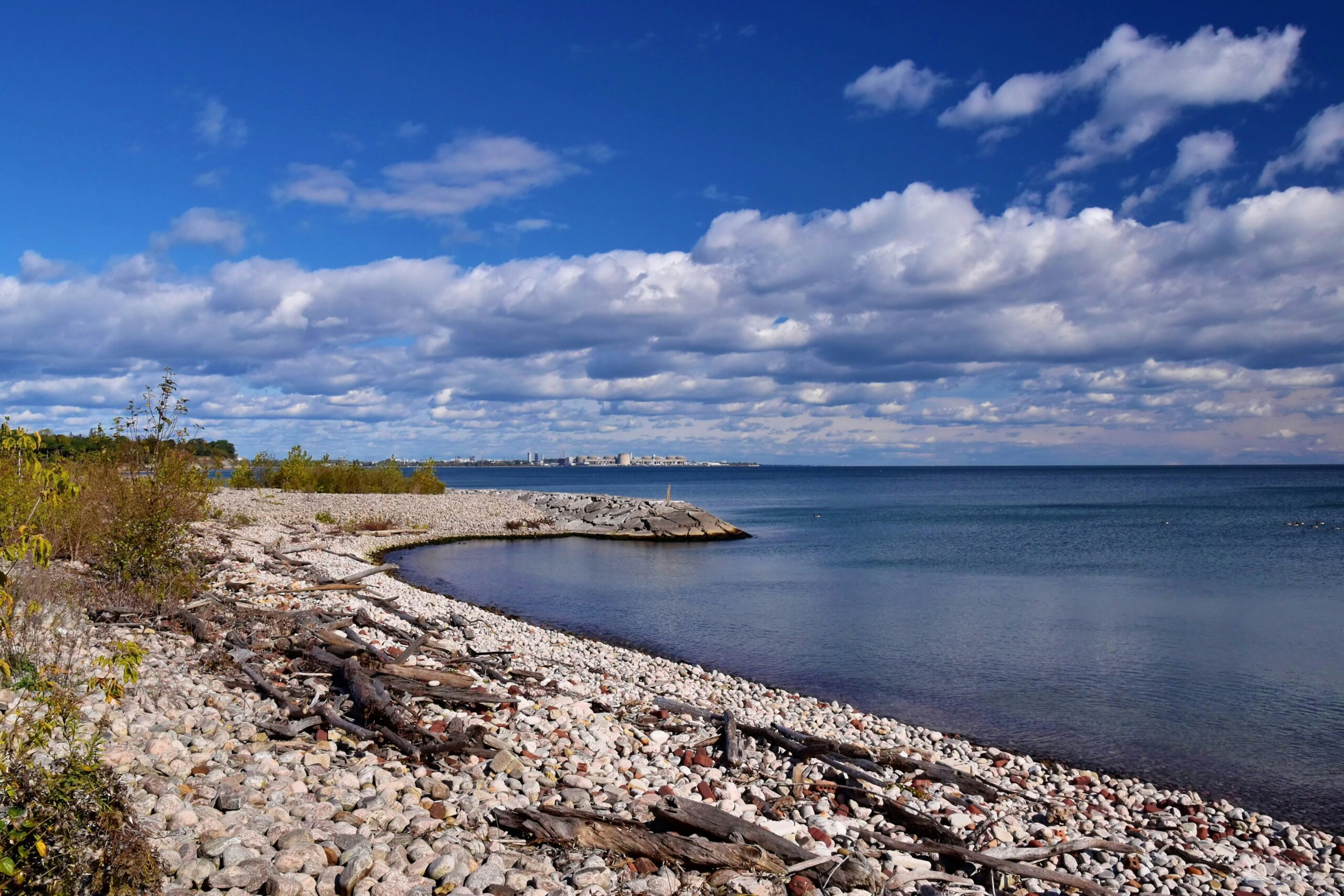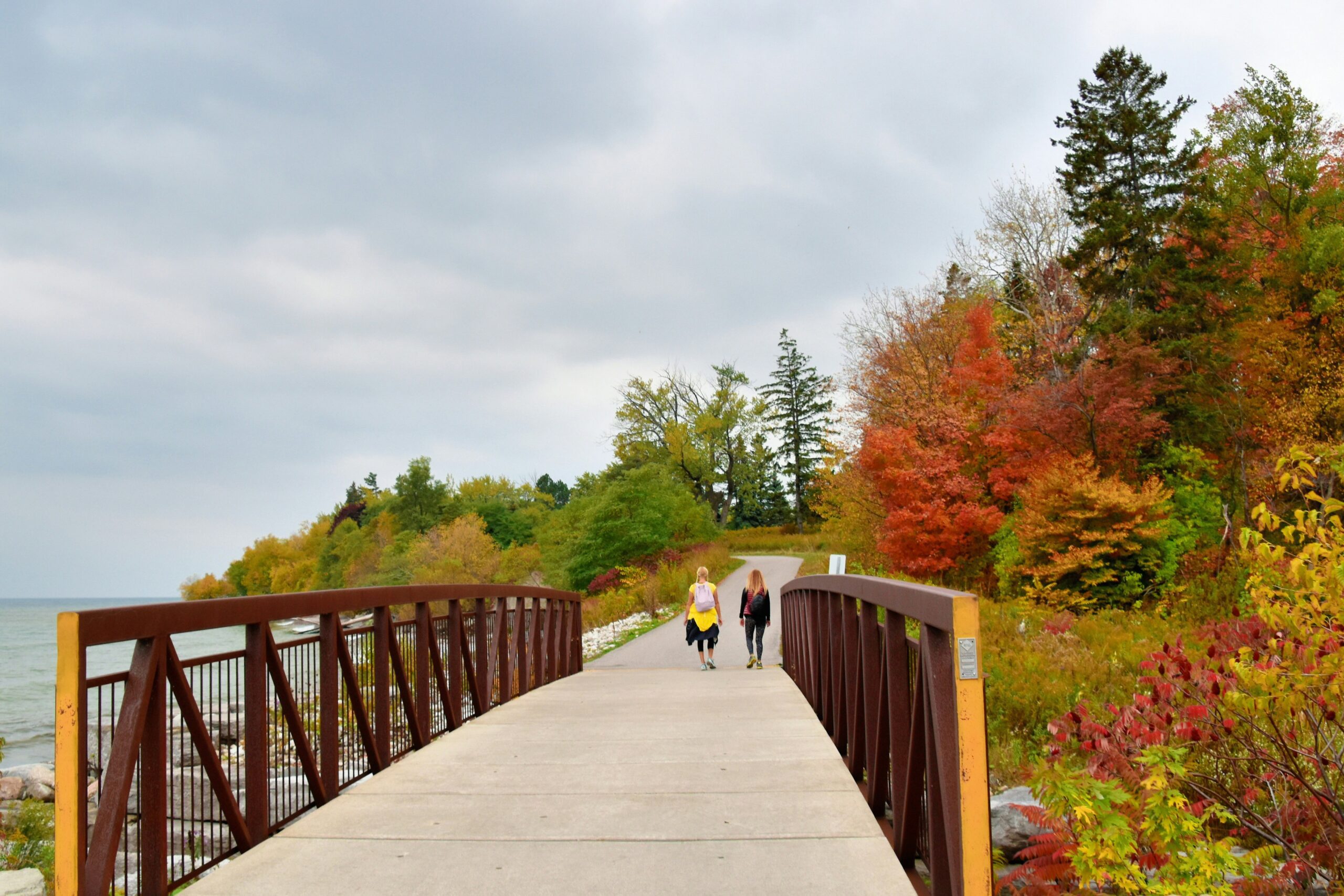Discover Rouge National Urban Park, Ontario
Found in the heart of Toronto, Rouge National Urban Park stands as a testament to the harmonious coexistence of nature and urban life. Spanning over 79 square kilometers, it is Canada’s first and only national urban park, offering a sanctuary of biodiversity within the bustling metropolis.
This natural haven boasts a rich tapestry of ecosystems, from lush forests and serene wetlands to meandering rivers and scenic cliffs. Visitors can immerse themselves in the beauty of the outdoors through various recreational activities, including hiking, birdwatching, cycling, and kayaking.
Beyond its ecological significance, Rouge National Urban Park serves as a cultural touchstone, preserving the heritage of Indigenous peoples and early settlers. Its trails are pathways through history, revealing stories of the land’s past and its ongoing importance to diverse communities.
Top 3 Facts About Rouge National Urban Park
01
Size
Rouge National Urban Park is Canada’s largest urban park, spanning over 79 square kilometers. It stretches across the cities of Toronto, Markham, and Pickering, making it a significant green space within the Greater Toronto Area. It is also 23 times bigger than New York City’s Central Park.
02
Biodiversity Hotspot
The park is home to an impressive array of flora and fauna, with over 1,700 species of plants and animals. This diversity is due to the convergence of several ecosystems, including Carolinian forests, wetlands, meadows, and agricultural lands.
03
Environmental Conservation
Rouge National Urban Park plays a vital role in environmental conservation and sustainability efforts. It serves as a natural buffer against urban sprawl, helping to protect sensitive ecosystems and provide essential habitat for wildlife. Additionally, ongoing restoration projects aim to enhance biodiversity and improve ecosystem health within the park.
Camping and transportation in Rouge National Urban Park
How to Get to Rouge National Urban Park
Getting to Rouge National Urban Park in Toronto is relatively straightforward, and here are some common methods:
- By Car: Most visitors prefer driving to Rouge National Urban Park. The park has several access points and parking facilities. Depending on your starting location, you can use highways such as Highway 401, Highway 407, or Highway 404 to reach the park. Follow signs for Rouge National Urban Park or specific entrances like Glen Rouge Campground or the Rouge Beach area.
- Public Transit: While public transit options are somewhat limited, you can still reach Rouge National Urban Park using a combination of public transit and walking or cycling. TTC (Toronto Transit Commission) buses serve some areas near the park, such as the Rouge Hill GO Station. From there, you can walk or bike into the park via designated trails or access points.
- Cycling: Rouge National Urban Park is accessible by bicycle, and there are dedicated bike paths and trails leading into the park from surrounding areas. If you’re an avid cyclist, consider biking to the park from nearby neighborhoods or using cycling routes connected to the park’s trail network.
- Walking/Hiking: Depending on your proximity to the park, you may be able to walk or hike to Rouge National Urban Park using nearby sidewalks or trails. Many local residents enjoy walking to the park for recreational activities, especially in neighborhoods bordering the park’s boundaries.
Places to Stay Near Rouge National Urban Park
While Rouge National Urban Park itself doesn’t offer camping facilities within its boundaries, there are several accommodation options nearby where visitors can stay while exploring the park. Here are some options:
- Glen Rouge Campground: Located at the eastern edge of Rouge National Urban Park, Glen Rouge Campground offers a convenient camping experience close to nature. Operated by Toronto and Region Conservation Authority (TRCA), this campground provides both traditional camping and oTENTik camping options. Reservations are required, especially during peak seasons.
- Campgrounds in Provincial Parks: There are several provincial parks within driving distance of Rouge National Urban Park that offer camping facilities. These include Darlington Provincial Park, Sibbald Point Provincial Park, and Emily Provincial Park. Each park has its own amenities and camping options, ranging from tent sites to RV-friendly campsites.
- Private Campgrounds: There are several private campgrounds in the vicinity of Rouge National Urban Park, offering a range of amenities and services. These campgrounds may include full-service RV sites, tent camping areas, cabins, and recreational facilities such as swimming pools and playgrounds.
- Hotels and Motels: If camping isn’t your preference, there are numerous hotels and motels in nearby towns and cities where you can stay while visiting Rouge National Urban Park. Areas like Markham, Pickering, and Scarborough offer a variety of accommodation options to suit different budgets and preferences.
Driving
The park has several designated parking areas and internal roads that allow visitors to access different parts of the park by car.
Public
While there are no dedicated public transportation routes within the park itself, there are nearby public transit options that can facilitate access to certain areas.
Parking
Rouge National Urban Park provides parking facilities at various access points throughout the park.
Best Time to Go to Rouge National Urban Park
Summer
Summer is a bustling season in Rouge National Urban Park, with long days and warm temperatures inviting visitors to enjoy various outdoor activities. The park’s trails are bustling from June to August, with hikers, cyclists, and families enjoying picnics and nature walks. Visitors can cool off with a swim at Rouge Beach or explore the park’s extensive wetlands by kayak or canoe. Summer also offers opportunities for guided nature walks, photography outings, and educational programs led by park staff.
Winter
Winter transforms Rouge National Urban Park into a peaceful wonderland, offering unique recreational opportunities amidst the snow-covered landscapes. From December to February, visitors can enjoy cross-country skiing and snowshoeing along groomed trails, immersing themselves in the tranquility of the winter forest. Families can also enjoy tobogganing at designated hills or participate in guided winter nature walks to learn about the park’s seasonal adaptations. For those seeking a cozy retreat, the park’s visitor center often hosts indoor programs and events focused on winter ecology and conservation.
Spring
Springtime in Rouge National Urban Park is a vibrant season, marked by the awakening of nature. From late March to May, visitors can witness the park’s diverse flora come to life, with colorful wildflowers blooming and trees budding. It’s an excellent time for birdwatching, as migratory birds return to the area. Hiking trails offer opportunities to explore the rejuvenated landscapes, while picnicking by the riverside provides a tranquil escape. Spring is also a prime time for spotting wildlife such as white-tailed deer, rabbits, and various species of amphibians.
Fall
Fall brings a spectacular display of colors to Rouge National Urban Park as the leaves change, painting the landscape in hues of red, orange, and gold. From September to November, visitors can embark on scenic hikes along the park’s trails, taking in breathtaking views of the fall foliage. It’s an ideal time for birdwatching, as many species of migratory birds pass through the area on their journey south. Photography enthusiasts will find endless opportunities to capture the beauty of the season, from reflective ponds to sun-dappled forests.
Must-See Attractions
Helpful Tips: Making the Most of Your Adventure to Rouge National Urban Park
Plan Ahead
Before your visit, check the park’s website for information on trails, facilities, and any seasonal closures or special events. Plan your itinerary and activities based on your interests and the time you have available.
Pack Appropriately
Dress appropriately for the weather and bring essential items such as water, snacks, sunscreen, insect repellent, and a map or trail guide. Consider bringing a camera or binoculars for wildlife viewing and photography.
Respect Wildlife
Keep a safe distance from wildlife and refrain from feeding or approaching animals. Observe wildlife from a distance to avoid disturbing their natural behaviors and habitats.
Follow Park Rules
Familiarize yourself with park rules and regulations, including any specific guidelines for activities such as camping, picnicking, and swimming. Respect signage and closures for your safety and the protection of natural resources.


Frequently Asked Questions about Rouge National Urban Park
You’ll never run out of ways to explore! From wildlife watching to kayaking the Rouge River, you have a variety of activities to dive into. In winter, cross-country skiing turns the park into a snowy wonderland.
The Vista Trail offers breathtaking views, while the Monarch Trail is perfect if you’re into bird-watching. Each trail offers a unique charm, so why not try them all?
Yes, entry to Rouge National Urban Park is free for visitors. However, some activities and facilities within the park may require permits or fees, such as camping, special events, and guided tours.
Swimming is allowed at designated areas within Rouge National Urban Park, such as Rouge Beach. However, visitors should exercise caution and follow posted signs and safety guidelines, especially regarding water quality and currents.
Yes, Rouge National Urban Park offers a network of bike trails suitable for cyclists of all skill levels. Cyclists can explore scenic routes through forests, wetlands, and meadows while enjoying the natural beauty of the park.
Yes, Rouge National Urban Park is open year-round, providing opportunities for outdoor recreation and exploration in all seasons. However, some facilities and services may have seasonal closures or restrictions, so visitors should check the park’s website for the latest information before planning their visit.